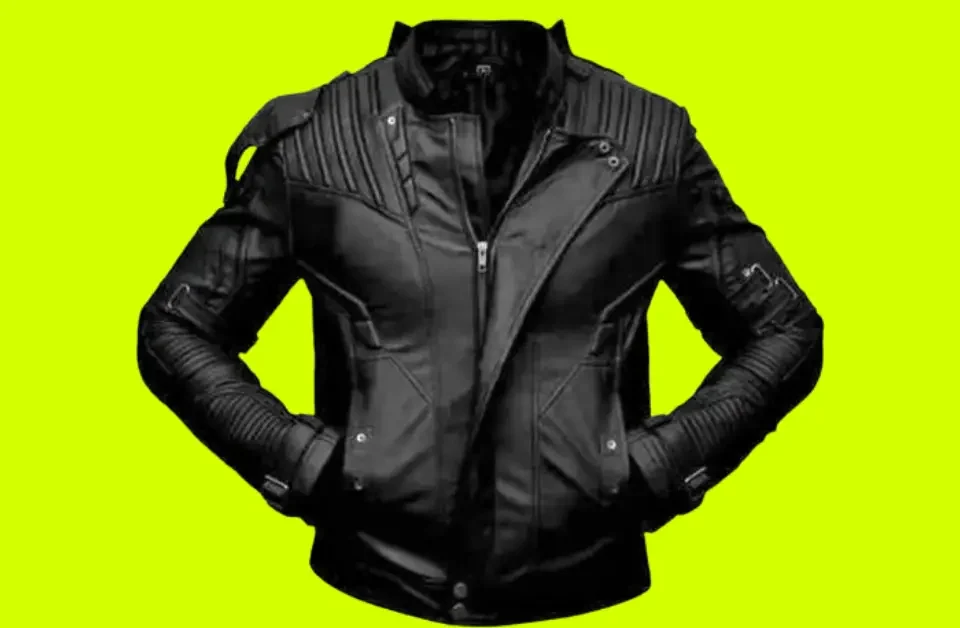
The Best Leather Jackets for Men (Winter 2024-2025)
November 18, 2024
The Historical Evolution of Leather Jackets in Fashion
November 18, 2024Choosing between a handmade and an industrially produced leather jacket comes down to understanding the significant differences in production, quality, and price.
Handmade leather jackets are often seen as more luxurious and durable, thanks to meticulous craftsmanship and attention to detail. Each jacket is unique, with opportunities for customization in fit, style, and features. This personalized approach also allows for higher quality control, ensuring each jacket meets strict standards of excellence.
Industrial leather jackets, on the other hand, focus on efficiency and affordability. Automated production processes enable consistent products at lower costs, making these jackets widely available. However, this typically sacrifices the individuality and longevity that handmade options provide.
The decision between a handmade or industrial leather jacket involves balancing quality, cost, and sustainability. While handmade jackets offer unmatched craftsmanship and a personal touch, industrial production makes leather jackets more accessible and affordable to the broader public. Understanding these trade-offs will help you choose the best leather jacket to suit your needs and budget
Handmade Leather Jacket
A handmade leather jacket is defined by the Directorate-General for Internal Market, Industry, Entrepreneurship, and SMEs of the European Commission as a “garment produced through manual craftsmanship, involving the selection of high-quality leather, cutting, and stitching by skilled artisans, with minimal or no use of automated machinery.” This process ensures that each jacket is unique, often characterized by superior durability and a high level of customization.

In the United States, the Federal Trade Commission (FTC) specifies that a garment labeled as “handmade” or “artisan” must be made by hand or with the use of simple tools, without extensive use of automated machinery. This means that a genuine handmade leather jacket is crafted with attention to detail and quality that sets it apart from its mass-produced counterparts.
Industrial Leather Jackets
Industrial production of leather jackets is defined by the Organisation for Economic Co-operation and Development (OECD) as “a manufacturing process that uses large-scale automated machinery to produce leather jackets in high volumes, focusing on efficiency and cost reduction.” This method allows for the creation of uniform and affordable jackets, often at the expense of individuality and craftsmanship.

In the United States, the Bureau of Labor Statistics (BLS) describes the industrial production of leather jackets as “a manufacturing process employing advanced technologies and assembly lines to efficiently produce jackets with a focus on speed and volume.” This implies that industrially produced leather jackets are designed to meet mass demand, with less focus on detail and customization compared to handmade leather jackets.
Handmade vs. Industrial Leather Jackets: Key Differences
Leather jackets have long been a symbol of style and rebellion, transcending fashion trends to become wardrobe essentials worldwide. Though leather jackets are universally loved, the choice between handmade and industrial versions significantly impacts quality, design, and the overall experience. Understanding these production differences is crucial for consumers making informed purchasing decisions.
1. Material Quality: Handmade vs. Industrial Jackets
The quality of the material is fundamental when discussing leather jackets. Handmade leather jackets often use high-quality, premium leather, with a strong focus on the selection process. Artisans typically choose full-grain or top-grain leather, known for their durability and natural beauty. Considerations like the source and sustainability of the leather are also key, with many handmade jackets utilizing ethically sourced materials.
In contrast, industrially produced jackets are made on a larger scale, which can lead to variations in the quality and consistency of the leather. While some industrial jackets may use genuine leather, others might incorporate synthetic or composite materials to reduce costs. Mass production often leads to lower overall leather quality, with less emphasis on sustainability or material origin.
2. Craftsmanship: Handmade vs. Industrial Jackets
Craftsmanship can determine whether a leather jacket lasts a lifetime or just a few seasons. Handmade leather jackets result from detailed work by skilled artisans who use hand-stitching techniques and tailor each piece individually. This meticulous process ensures that the jacket is not only durable but also unique, often featuring custom fit and personalized details.
On the other hand, industrial leather jackets are produced on assembly lines where machines do much of the work. This method allows for faster production and standardized sizing and models but can compromise craftsmanship. The emphasis on speed and efficiency often means that these jackets lack the refined details and long-term durability of handmade pieces.
3. Customization: Handmade vs. Industrial Jackets
Handmade jackets provide significant customization options. Artisans can create unique, bespoke designs tailored to the client’s specific tastes and preferences, whether it’s the color, fit, or intricate details. A handmade jacket can truly reflect personal style, making it a one-of-a-kind item.
Industrial jackets, however, are designed with mass appeal in mind, often limiting design variations to standardized options with little room for customization. While these jackets can still be stylish, they lack the unique touch that comes from a custom-made piece.
4. Cost: Handmade vs. Industrial Jackets
The cost of a leather jacket varies widely depending on whether it is handmade or industrially produced. Handmade jackets generally have a higher upfront cost due to the quality of materials and labor-intensive process involved. However, this investment often translates into long-term value, as handmade jackets are typically more durable and unique, potentially lasting a lifetime.
Industrial jackets, on the other hand, are usually more affordable thanks to economies of scale. While the lower price makes them accessible to a broader audience, consumers must consider cost versus quality and longevity. In many cases, an industrial jacket may need replacement sooner than a handmade one, diminishing its overall value.
5. Environmental Impact: Handmade vs. Industrial Jackets
The environmental and ethical implications of leather jacket production are increasingly important to consumers. Handmade leather jackets often align with more sustainable and ethical practices, as they are produced on a smaller scale with greater attention to environmental impact. Artisans may use eco-friendly tanning processes and ethically sourced leather, reducing the overall carbon footprint of the jacket.
Conversely, industrial production is often associated with a greater environmental footprint. Mass production processes may involve harmful chemicals and contribute to pollution. Moreover, ethical concerns about labor practices in factories producing these jackets also raise questions about the true cost of fast fashion.
6. Brand Value: Handmade vs. Industrial Jackets
Handmade leather jackets are often associated with well-known brands like NOVIDO or Barone Firenze, which have a rich heritage of craftsmanship. These jackets carry cultural significance, symbolizing not only fashion but also personal identity and status. Owning a handmade leather jacket can be a statement of taste, quality, and appreciation for artisanal work.
Industrial jackets, while popular and widely accessible, are more closely tied to fast fashion and current trends. They provide consumers with a way to participate in the latest styles without the high cost of handmade pieces. However, this accessibility often comes at the expense of the deeper cultural meaning and brand value that handmade jackets carry.
7. Consumer Experience and Satisfaction
The experience of purchasing and owning a leather jacket can differ significantly between handmade and industrial versions. With handmade jackets, customers often receive personalized service, from initial consultation to post-purchase support. This attention to detail and care contributes to higher overall satisfaction, as consumers value the uniqueness and quality of their investment.
For industrial jackets, the consumer experience is typically more focused on convenience. These jackets are easy to find and purchase, often available in a variety of retail settings. However, customer satisfaction can vary greatly depending on the brand and price, with some consumers finding that the lower price does not always equate to the best value or quality.
Conclusion
Choosing between a handmade and an industrially produced leather jacket involves considering several factors, from material quality and craftsmanship to cost and environmental impact. Handmade jackets offer unmatched quality, customization, and cultural significance, making them a valuable long-term investment.
Industrial jackets, while more accessible and convenient, may lack the craftsmanship or durability of handmade options. Ultimately, the decision depends on personal preference, budget, and what value you place on quality and individuality.





